What Animals Are Affected By Global Warming And Why
x Hawaiian honeycreepers
Small isle species, confined to limited terrain, are ever vulnerable, particularly to invasive species, burgeoning homo populations, and new diseases. On Hawaii, climate change intersects with these three factors to imperil its unique birds, including half-dozen species of honeycreeper.
The small, frequently brightly coloured honeycreepers tend to survive at college altitudes where their woods habitat is less likely to exist destroyed by humans. Higher elevations are also libation, and less attractive to mosquitoes, which were first carried to Hawaii in the 19th century, long after the birds had evolved there. Outbreaks of musquito-borne diseases such as avian malaria and avian pox began shortly afterwards.
As the globe warms, so mosquitoes move into college elevations – and in that location is nowhere for the honeycreepers to escape to. The birds are particularly susceptible to avian malaria. Last year, a scientific written report noted that the prevalence of avian malaria has more than than doubled since the 1990s in the upper regions of the Hawaiian island of Kauai. Naturalists working in the Kauai mountains never encountered mosquitoes despite searching for them until the terminal six years or and then, during which time they have become commonplace. Also every bit mosquitos, climate change is also assisting non-native competitors and invasive weeds, which may hasten the native birds' demise.
Eben Paxton, of the United states of america Geological Survey's Pacific Isle Ecosystems inquiry center, fears that two honeycreepers, the 'akikiki and the 'akeke'e, will fall extinct in the next decade "without major intervention". This ways action unfamiliar to many conservationists: removing standing water to reduce musquito populations, and even releasing genetically modified mosquitoes to reduce populations over time, as undertaken in Brazil to gainsay the Zika virus.
ix Baird's sandpiper
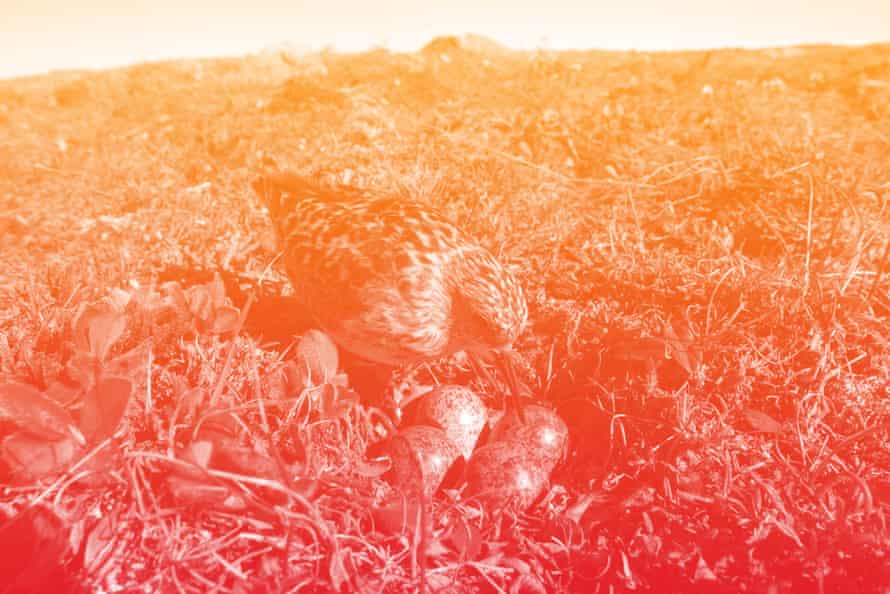
The Baird'due south sandpiper (Calidris bairdii) is not likely to become extinct any time soon. It is still listed every bit a species of "to the lowest degree concern" on the International Marriage for Conservation of Nature's (IUCN) Red Listing. But the challenge posed by climate change for this elegant piffling wading bird is one experienced by many other species: it's a problem of phenology and synchronicity. Phenology, the study of the timing of natural events in relation to weather and climate, is increasingly complex and important in an era of rapid climate modify. Changes in phenology may exist a positive sign, demonstrating that species are adapting to climatic conditions and migrating earlier, or flowering sooner, or having offspring earlier in the jump to coincide with nutrient supplies that are changing with the season.
But many species are struggling to suit quickly enough. Increasing temperates in the high Arctic are encouraging shore birds such as the Baird'south sandpiper to breed earlier in the season. This means that more chicks are emerging earlier the peak abundance of the insects that they feed own. Studies testify that chicks raised outside the flow of meridian abundance grow much more slowly, which means they are less likely to survive into adulthood. A similar mismatch between chick emergence and peak nutrient has besides been shown to occur with the European pied flycatcher in holland.
eight Giant mountain lobelia

Increasing temperatures are posing a challenge for all kinds of montane species. They may retreat to college altitudes but, eventually, they will run out of mountain. Mountainous regions are also probable to feel specially extreme temperature changes: while the Intergovernmental Panel on Climate Change estimates that 21st-century climate warming is likely to exceed 2C in many scenarios, the rate of temperature increase in mountainous areas is predicted to be much higher – possibly three times the increase recorded over the 20th century.
The giant mountain lobelia (Lobelia rhynchopetalum) is a native of Ethiopia, a spectacular-looking tropical tall constitute that resembles a spiky tropical palm but then shoots upwardly a huge woolly protuberance, sometimes more than 10 metres tall. Implausibly large in arid mountainous terrain, the family of lobelia plants remarkably predate the formation of tall mountains in eastern Africa, to which they've adjusted.
They are non finding information technology so easy to conform to rapid anthropogenic climatic change. A scientific study of the plant'due south prospects last year ended it "will endure massive reduction in range" nether warmer climes, with merely 3.4% of its habitat withal suitable by 2080. By and so, it is predicted to be confined to simply four suitable mountain-top habitats "which may be too small to sustain viable populations". There's a further problem. As alpine species such as the behemothic mountain lobelia are confined to isolated mountaintops, their genetic diversity will narrow dramatically – past 82% – further increasing the likelihood of extinction.
The travails of this mountain behemothic are matched past mountain institute species effectually the world, including high-altitude species in Uk. Botanist Trevor Dines, of the charity Plantlife, says: "It'south already clear that some of our rarest Arctic-alpine plants, such as Highland saxifrage, are at risk. Equally the climate warms, they're already moving to higher altitudes to find libation, damper conditions. At some point, they'll run out of mountain to climb and we'll be facing the extinction of some of our almost enigmatic and wonderful flora."
7 Bramble Cay melomys
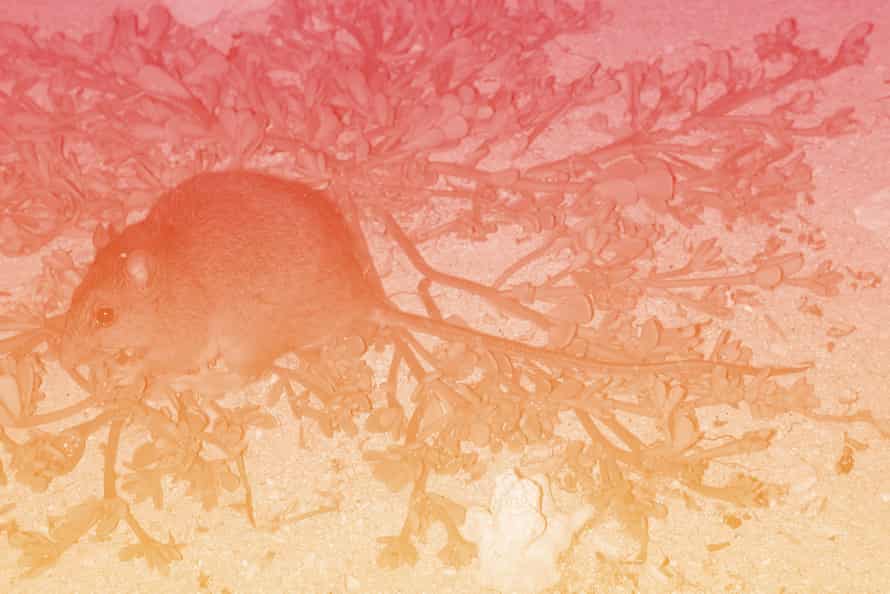
For many creatures, climate change is the almost barbarous component of a perfect storm driving them towards extinction. For some, extinction is quite literally acquired by storms and ascent seas. Anthropogenic climate change has almost certainly driven our first mammal species to extinction. The Bramble Cay melomys (Melomys rubicola), or mosaic-tailed rat, lived the unobtrusive life of a small rodent in the eastern Torres Strait. It was first discovered – and killed – on the tiny vegetated coral island of Bramble Cay past Europeans in 1845. Several hundred lived at that place every bit recently as 1978. But the highest betoken of Brier Cay is three metres above body of water level and around the Torres Strait the sea level rose at nearly twice the global average rate betwixt 1993 and 2014. Since 1998, the area of Bramble Cay in a higher place high tide has shrunk from from 4 hectares to 2.5 hectares. The melomys has lost 97% of its habitat and was terminal seen by a fisherman in 2009. Scientists laid traps in 2011 and twice in 2014 to take hold of the little rodent and start a captive breeding programme to salve it from extinction. But they were too late: they couldn't detect whatever trace of the brute. At that place's a small chance an as-yet-undiscovered population may survive in Papua New Guinea but the scientists accept judged it is almost certainly extinct.
6 Sierra Nevada blue
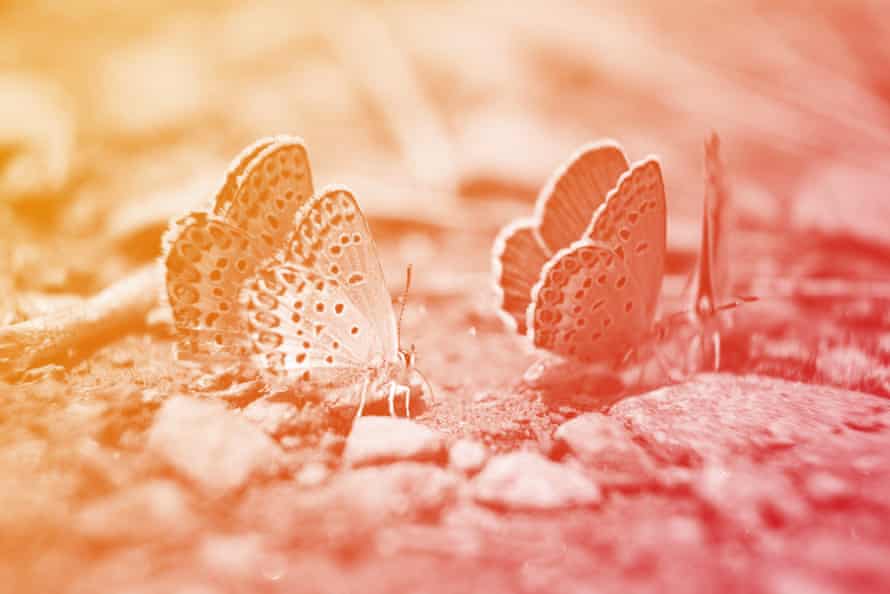
The Sierra Nevada bluish (Polyommatus golgus) is a pocket-sized butterfly that is both brilliant blue (the male) and dark blackness-brown (the female person) and is i of four endangered species unique to Espana. It is only found in the peaks of the Sierra Nevada and in another minor mountainous area further north.
It has already lost habitat to overgrazing by animals, a ski resort, and the trampling of vegetation by people on roads and footpaths. Merely its biggest threat is climate change, according to a species recovery program drawn upwardly by the researcher Miguel Munguira for Butterfly Conservation Europe. Drought, increased temperatures and reduced snow coverage are set to displace the species to higher areas where the habitat might non be suitable. "For the populations living on the highest areas of the mountains these changes would hateful their extinction," says Munguira.
Of the 482 species of butterfly in Europe, 149 are restricted to such pocket-size areas that it is hard for scientists to assess how the changing climate will bear upon them. Isolated in such small pockets of land makes these rare insects hugely vulnerable – wild habitat is too fragmented for even winged creatures to easily find a suitable alternative. And those that tin can merely live in northern Europe, or on the tops of mount ranges, volition be the commencement to go.
"The calibration of threat to the species of Europe is massive," says Nigel Bourn, conservation director of Butterfly Conservation in U.k.. "I don't really think policymakers have fifty-fifty begun to come to terms with that."
The disappearance of a few collywobbles may not motility the hardest of human hearts but these are the near closely monitored insects: the affect of climate change on hundreds of collywobbles will exist replicated in other less-known pollinators and insect populations – from bees to hoverflies – and the very fabric of life on earth will commencement to fray.
5 Sea turtles

Rising seas and stormy weather will affect turtle species in the virtually direct of means, eroding or destroying many of the beaches where they lay their eggs. But scientists accept discovered that hotter sands also cause greater numbers of body of water turtles to exist born female. In the brusque term, over the side by side 20 or 30 years, this will increase turtle numbers. But a study published in Nature Climate Change examining the loggerhead turtles of Cape Verde in the Atlantic, warns that significantly warmer sands in the next 150 years could cause such a preponderance of females that species become extinct. Hotter sand tin can too cause complete nest failure.
Turtles are facing more problems than most animals: warming body of water temperatures volition modify currents and shift the distribution and affluence of prey species. Species such as the hawksbill turtle are dependant on coral reefs which are bleaching and dying with climate change.
4 Adélie penguin
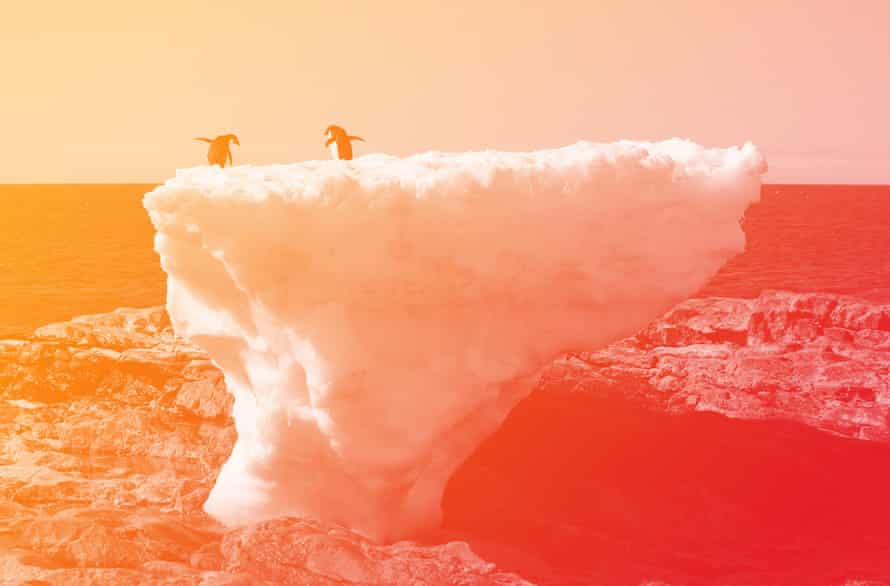
The Adélie penguin is i of just 2 true Antarctic penguins, surviving on the ice-bound continent for 45,000 years. Now its survival is being questioned by scientists puzzling over the precise cause for precipitous declines that correlate with a apace changing climate. Colonies of this picayune penguin on the Due west Antarctic Peninsula have declined past at to the lowest degree fourscore% since the 1970s, and this is an surface area with more than years of warmer-than-average sea surface temperatures than other regions.
Changes in sea temperature and sea ice affects the availability of nutrient, and where fish populations have fallen the penguins eat more than krill, which is less nutritious. Nest sites may non be platonic if warming is creating premature cook and puddles on the ground equally eggs cannot survive if they are lying in a pool of water. Almost importantly, the Adéie penguin cannot survive without sea ice.
In a paper published last year, researchers predicted that 60% of the nowadays habitat would be unsuitable for the penguins by 2099. But Adélie populations in the southern most parts of Antarctica, where there has been fewer climatic and environmental changes, are much more stable. The Adélie has refugia but for how long?
3 White lemuroid ringtail possum
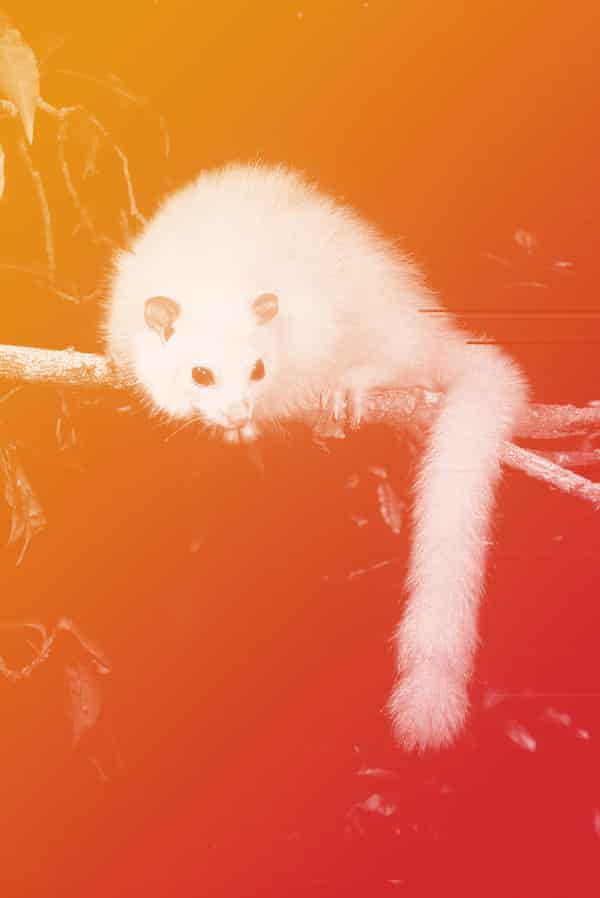
The polar deport may exist the poster-animal of climate change victims merely this every bit attractive – and rather more timid – white furry mammal is much closer to the edge of extinction. This arboreal marsupial lives on the wooded slopes of Mount Lewis in the Daintree rainforest in Queensland, Australia, where scientists accept judged it already "ecologically extinct". The white lemuroid ringtail possum (Hemibelideus lemuroides) lives off leaf moisture and are only constitute in the high-distance cloud forest and cannot survive temperatures in a higher place 30C for more than a few hours. At less than three,000 metres high, the climate of Mount Lewis is rapidly changing. A severe heatwave in 2005 killed off most of these cool-loving creatures. In July 2014, scientists observed iv or five adults during ten surveys. Even if the population bounces back, soon it will accept nowhere left to go. Genetic studies have never been carried out to decide whether the white possums are a separate species or simply colour variations of the brown-furred lemuroid ringtail possums, which announced to be able to survive higher temperatures. But Prof Bill Laurance of James Cook University has argued that the white form is "a unique evolutionary unit and therefore worthy of conservation". It is also simply ane furry symbol of the "ecological catastrophe" that scientists warn will soon befall thousands of species who volition find that Australia's tropical rainforests offer them no shelter in an era of warming.
2 Ringed seal
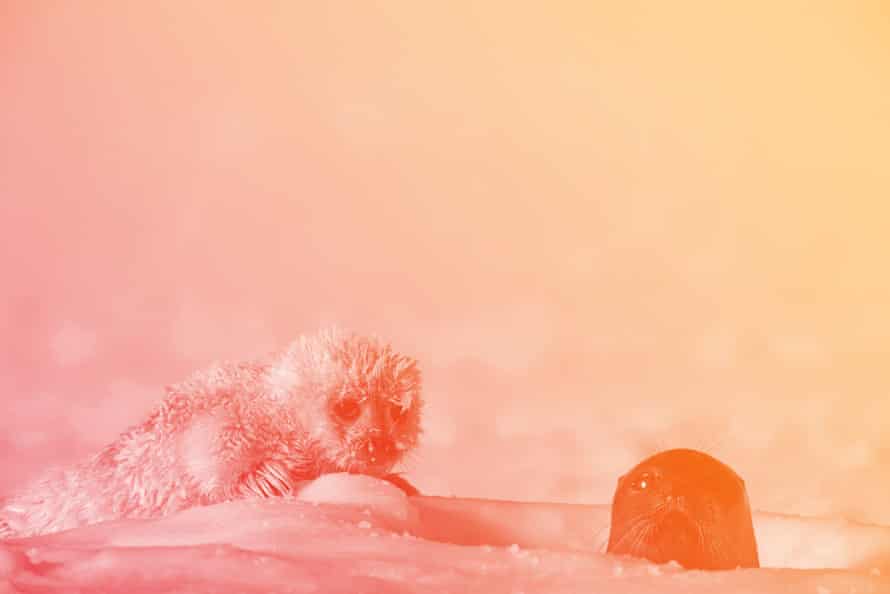
The nearly commonly pictured victim of climate change is the polar bear clinging to a rapidly diminishing iceberg. But there is some other vulnerable Chill mammal that is just every bit photogenic and even more dependant upon Arctic body of water water ice for its survival.
Climatic change is driving polar bears from the safe of sea ice and on to hazardous dry land, and into more disharmonize with humans. Merely the ringed seal, the smallest Arctic seal species, cannot conform to dry land then hands.
Ringed seals balance on sea ice, conceive beneath it, and give birth upon it, excavating snow dens on the surface of the sea ice to shelter their newborns. These dens keep the young warm, and depends upon sufficient annual snowfall.
Warmer spring temperatures causes snow dens to collapse and the ice to break up early, separating immature – just 60cm long when built-in – from their mothers, and exposing them to the common cold, predators and pathogens.
Ring seal reproductive rates are already showing declines associated with climate change. Hundreds of pups are usually built-in each twelvemonth on the fjords along the west declension of Svalbard but pups were "almost non-real" in 2006 and 2007, when many fjords did non freeze for the first time in recorded history.
If ringed seal populations slump, there will be another victim, likewise: they are the prime nutrient source of the polar bear.
1 Staghorn coral and other corals

Coral is not just a living species; it's a miraculous ecosystem engineer, edifice elaborate and beautiful subterranean structures that provide food and shelter for so many other forms of life on Globe. Coral reefs are hailed as the "rainforest of the sea" but such analogies underplay their significance: they house a greater diversity of beast and plant life than rainforests. Coral is beingness killed by climatic change and its extinction is coming sooner than many other creatures imperilled by climate change.
Staghorn coral (Acropora cervicornis) is experiencing disastrous declines in its range in the southern Gulf of Mexico, Florida and the Bahama islands, declining by up to 98% in parts of the Caribbean since the 1980s. It is listed every bit "critically endangered" on the IUCN ruddy list.
Since 2005, the Caribbean area region has lost 50% of its corals, largely because of rising body of water temperatures and mass bleaching incidents which have killed coral around the earth. Species such as the orange-spotted filefish are completely dependent on coral reefs, and highly sensitive to warmer h2o.
Across the world, coral reefs are bleaching and dying: Japan'due south government this year reported that almost 3-quarters of its biggest coral reef has died, blaming rising ocean temperatures caused by global warming. Australia'southward Neat Barrier Reef experienced the worst bleaching always recorded by scientists in 2016. Researchers at the Us National Oceanic and Atmospheric Administration have predicted that by 2050 more than 98% of coral reefs around the world will be affected by "bleaching-level thermal stress" each year. They conclude that reefs, including the Corking Barrier Reef, are unlikely to survive such events.
Man sapiens is non dependant on the coral reefs merely their loss would exist a devastating and demoralising indictment of our era, and the destructiveness of our species. "We'll lose more species of plants and animals between 2000 and 2065 than nosotros've lost in the last 65 1000000 years," environmentalist Paul Watson, the founder of Sea Shepherd, has pointed out. "If we don't find answers to these problems, we're gonna be victims of this extinction consequence that we're at fault for."
Source: https://www.theguardian.com/environment/2017/jan/19/critical-10-species-at-risk-climate-change-endangered-world
Posted by: raybustried.blogspot.com

0 Response to "What Animals Are Affected By Global Warming And Why"
Post a Comment